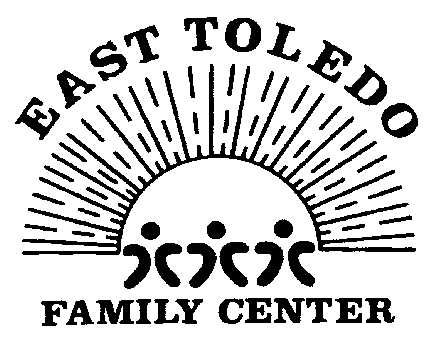1901-1917
Beginnings of the
Neighborhood House
On Sunday, August 4, 1901, Rev. H. Hoover, former pastor of Memorial Baptist Church, held a tent meeting on factory grounds owned by D.J. Nysewander at East Broadway and the NYC tracks in East Toledo. Minutes from that organizational meeting survive in the records of the Family Center. (Photo of minutes) A list also survives of those who contributed toward the “interest on loan, sidewalks, hymn books, lights and piano-tuning” for this first Industrial Heights Mission. Contributors included such wellknown East Side names as Metzger, Rideout, Tracy, and Hirzel.
Rev. Hoover was born in 1859 in Selkirk, Ontario, Canada. (Photo of Hoover) He attended Chicago University before becoming a Baptist Minister. In 1893 he married Nellie Titus. (Photo of Mrs. Hoover) He was just past eh age of 40 when he began his mission work in East Toledo that resulted in the formation of the Neighborhood House. And that is where he spent all the remaining years of his life. He died in January 1932 at the age of 72.
That Mission in the summer of 1901 lasted for several days, and then was enlarged into “settlement work” to help the many new immigrants in the area become adjusted to life in America. By the summer of 1902, property was obtained on Vinal Street, and adjoining lots were soon added through the generosity of Alexander Black, George Metzger, Isaac Gerson, and Mr. Nysewander. (Photo of any of these men) Rev. Hoover and his wife Nellie moved into a large shed on the grounds until more permanent housing could be built.
The land on Vinal Street near East Broadway, which was originally a neglected dump, was quickly improved. Dirt from the streets was used as fill, grass was sown, East Side florists provided flowers, the Monroe Nurseries gave shrubs, and the old dump became a thing of the past. (Photos of the Vinal Street property) The Ohio Neighborhood Institute, commonly called the Neighborhood House, was incorporated, and the property at 1019 and 1027 Vinal Street developed rapidly. M.J. Riggs, superintendent of the American Bridge Company in East Toledo, helped purchase playground equipment along with paint, fencing, and ornamental gates and posts.
A depression in 1908 led to what foreign families called the “slim winter.” When no other charities were available to help the many families who were out of work, Mrs. Hoover and East Side businessmen stepped in to provide food and aid through the Neighborhood House. (Early photos of families) During the years of World War 1, there was a need for classes in English for both children and adults, as more and more immigrants came to work in the factories of America. (Photos of Greeks and other immigrant families) Before Oakdale School opened, school classes were held at the Neighborhood House for small children of various grades.
By 1916 the Neighborhood House had a large playground, probably the first in Toledo. It featured a merry-go-round, basket swing, may pole, and other playground equipment. There was also an enormous sand box that could hold many children at one time. A “Sunshine House” donated by Dorothy Kimball was used to help children learn how to keep house. Also, tea parties were held to teach the children “proper manners” when entertaining. And of course, there were sports of al kinds, including boxing matches.
Attendance records from 1916 show just how important the work of the Neighborhood House was to the community. The Vinal Street playground was used by 5,000 children that year. Also, 3,483 attended American Citizenship classes, 2,385 came to other lectures and 2,695 participated in a “School of Conduct.” A satellite ministry of the Neighborhood House, the Ironville Neighborhood Settlement, called Lincoln Place, had 7,860 participants in 1916. For the year, 28,766 people were involved in all the activities of this important East Side ministry.
